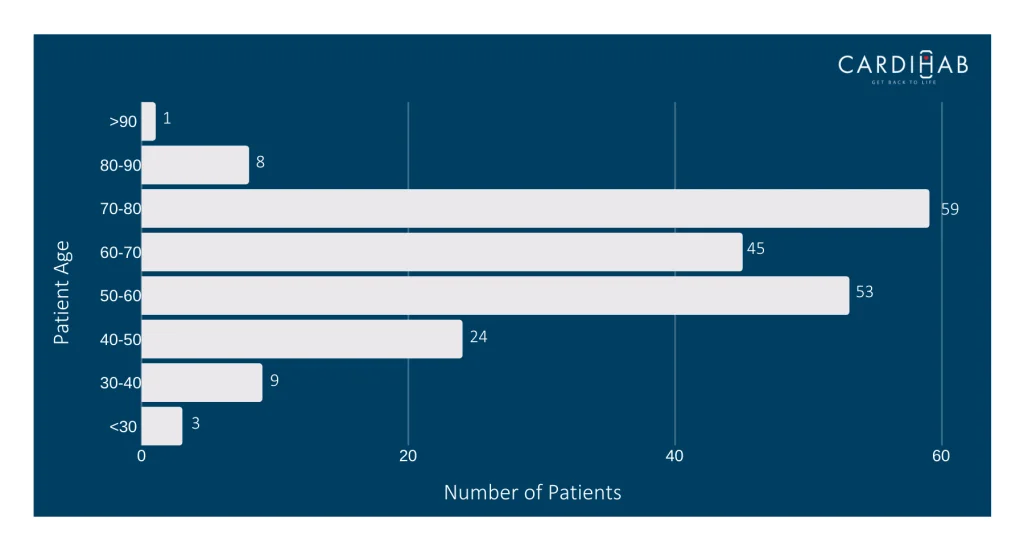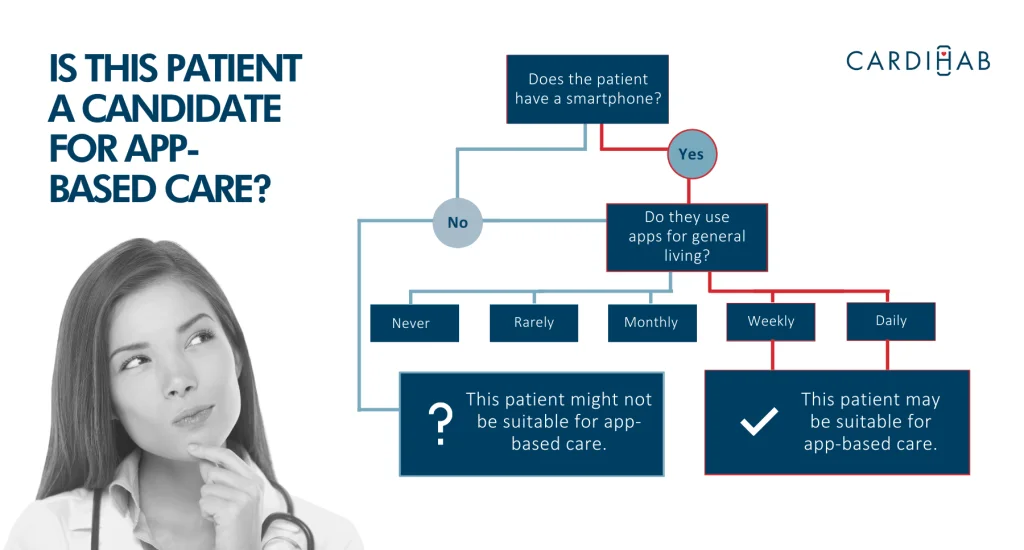Digital health apps are not only for the young
One of the outcomes from the COVID pandemic is the fast-tracked adoption of technology to care for and triage patients through the healthcare system. But still, questions remain about the role of age in identifying patients who can benefit from these new ways of delivering patient care.
Telehealth and digital health platform usage surged as traditional models of care were either restricted or abruptly ceased to minimise the risk of exposure to COVID-19. Cardiac rehabilitation services across Australia were among those that were significantly disrupted, resulting in many clinics seeking to introduce remote models of care, frequently including digital solutions such as the Cardihab platform.
Cardiac rehabilitation is recommended for any patient who has an acute cardiac event, generally the result of cardiovascular disease (CVD). While not exclusively a condition for people over the age of 45, the vast majority of Australians with CVD fall into the age groups of 65-74 (30% of CVD patients) and 75+ (32.5%). Therefore, chronic CVD and cardiac rehabilitation patients might not be the first clinical population thought of as suitable users of digital health apps.
However, recent data from 200 patients enrolled in Cardihab's digital cardiac rehabilitation program suggests that age might not be as clear cut a factor when deciding who to prescribe digital health programs. Data from our real-world experience has shown that 59% of our patient users are aged over 60, with those aged between 70 and 80 representing the largest patient group (31% of users).

In the Cardihab context, a patient is referred and enrolled in a digital cardiac rehabilitation program by a Healthcare professional (HCP). Their prescribed program is delivered via the Cardihab app and supervised throughout the course of their program by a qualified HCP. While it is feasible that user age in our sample is influenced by the demographics of the HCP’s patient population, this is an important insight into the potential user age differences that might be observed between a prescribed and clinically guided digital health app like Cardihab vs a freely available consumer self-help app.
What is becoming clearer as the collective evidence grows, is that technology access and literacy are important pre-requisites for using digital health platforms. In particular, technology literacy is an important factor for determining which patients would be suitable for digital health apps. From our experience, these 3 simple questions provide adequate insight into a person's tech literacy to enable a decision as to whether to prescribe digital health app to a patient or not.
- Do they have a smart phone? Yes/No
- Do they currently use apps for general living? Yes/No
- If so how often?
- Daily
- Weekly
- Monthly
- Rarely
- Never
Patients that use apps at least weekly are likely to have the aptitude to use digital health apps efficiently and effectively. We therefore encourage HCPs to consider asking these simple tech literacy questions before ruling someone out of a digital health app.

While there is still much to learn about the use of digital health apps in the management of chronic cardiovascular disease, we are encouraged by our observations on the age of patients enrolled in our digital program. We look forward to contributing further insight as our real-world experience grows and as digital health apps take their place as an important option for chronic disease management.